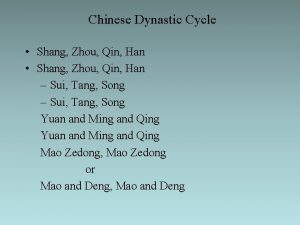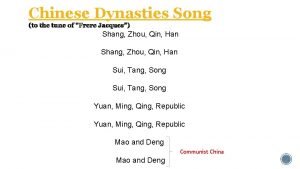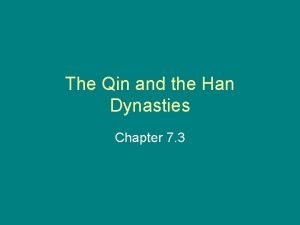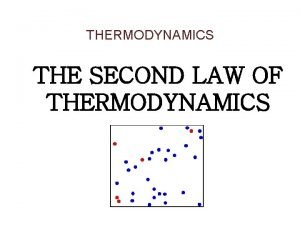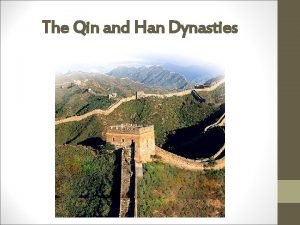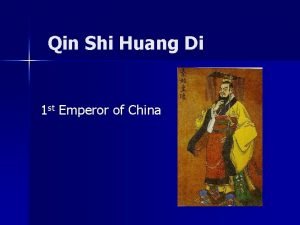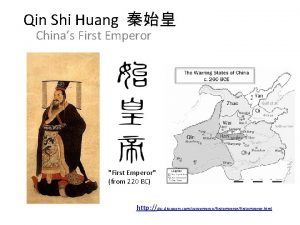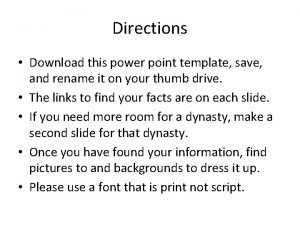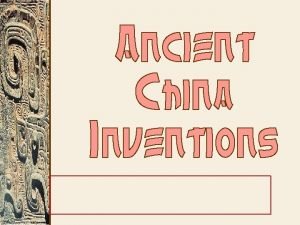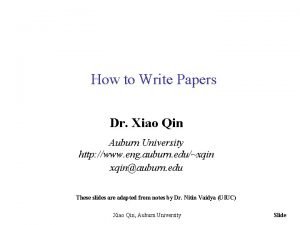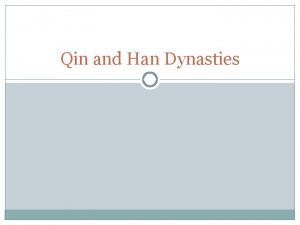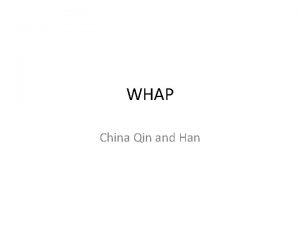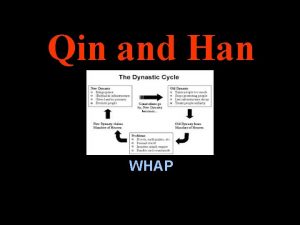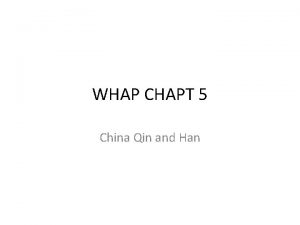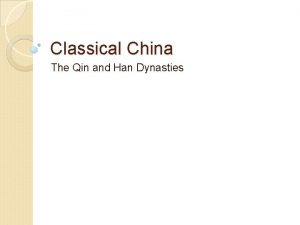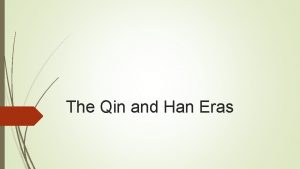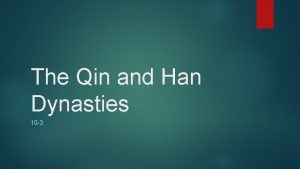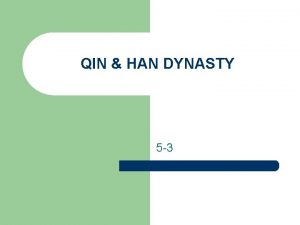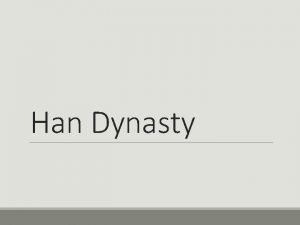THE QIN AND THE HAN The Qin New










- Slides: 10

THE QIN AND THE HAN

The Qin � � � New emperor was known as Shi Huangdi In 221 B. C. Shi Huangdi began ending battles between warring states Shi Huangdi was a Legalist Tried wiping out Confucian teachings Killed 460 critics Burnt books with ideas he didn’t like

Uniting China � � � � Shi Huangdi wanted a strong central government Took land from noble families* Forced nobles to live at the capital To unite lands he controlled he built highways and irrigation projects Forced peasants to work on the projects Set high taxes to fund his projects Set government standards for weights, measures, coins, and writing**

The Great Wall � � � Shi Huangdi built a wall along the northern border* Forced hundreds of thousands of peasants and criminals to build it Many workers died from labor**

The Qin Dynasty Ends � � � Shi Haungdi died in 210 B. C. He was buried in an elaborate tomb Near his tomb terra cotta soldiers were buried* Shi Haungdi’s son took over and was a less effective ruler A civil war broke out and General Liu Bang defeated the Qin forces**

The Han Dynasty � � � Began in 202 B. C. He continued the Qin policy of a strong central government but lowered taxes Created less harsh punishments The peasant men owed a month of labor to the government (building roads, canals and irrigation projects) Bureaucracy- family members and trusted people* Tested candidates on their knowledge of Confucianism to find the most educated and ethical people to run offices*

Empress Rules � � � When Liu Bang died in 195 B. C. his widow ruled* Their son was too young to be in charge She outlived her son and continued to place infants on the throne * She died in 180 B. C. All of her relatives were executed

Expanding the Empire � � From 141 B. C. to 87 B. C. � � � Wudi began to rule the Han Empire Became known as Martial Emperor* Used war to expand China Gained southern Chinese providences, northern Vietnam, and northern Korea Faced rebellions, peasant revolts, floods, famine, and economic disasters and they still ruled until 220 A. D.

Life in Han China DAILY LIFE � � � � � Lived and worked on farms Lived in villages One to two story mud houses* Rich farmers had an ox to pull plows** Few simple tools Simple clothing North- raised wheat and millet South- rice Families had vegetable gardens for additional food Meat and fish were pricey CITY LIVING � � � Trade Education Government Merchants, craftspeople, and government officials lived there Crowded Entertainmentmusicians, jugglers, and acrobats

THE QIN � � � � Overview: Shi Huangdi was a legalist Tried wiping out Confucian teachings Killed 460 critics Burnt books with ideas he didn’t like Strong central government To unite lands he controlled he built highways and irrigation projects Set high taxes to fund his projects Set government standards for weights, measures, coins, and writing � � � THE HAN Began in 202 B. C. Strong central government Created less harsh punishments Bureaucracy Tested candidates on their knowledge of Confucianism*
